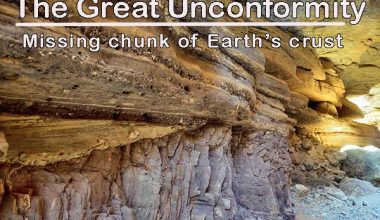Exploring Death Valley National Park:
Death Valley is a really hot and dry place in California, and it’s one of the hottest spots on Earth in the summer. The Timbisha tribe, who used to be called the Panamint Shoshone, have lived there for a very long time. Death Valley National Park is a tourist attraction point due to its location, geography, history, weather, and temperature.
Death Valley constitutes much of Death Valley National Park. It is part of a big national park and a special area called the Mojave and Colorado Deserts Biosphere Reserve. It’s surrounded by mountains, like the Amargosa Range on one side and the Panamint Range on the other. The park is huge, covering about 3,000 square miles, and the tallest mountain in the park is called Telescope Peak. Death Valley National Park was designated as a dark sky park by the International Dark-Sky Association.
In Death Valley, there’s a place called Badwater Basin, and it’s the lowest point in North America, way below sea level. It’s also not far from Mount Whitney, which is the highest mountain in the U.S. So, you have the lowest point and the highest point pretty close to each other.
When you think of Death Valley, a myriad of questions may arise – from Death Valley’s extreme weather conditions to its intriguing history. This article will serve as your comprehensive guide to Death Valley, addressing common queries and offering valuable insights into this captivating destination.
Where is Death Valley National Park?
Located on the border of California and Nevada, Death Valley is part of the larger Mojave Desert. It stretches approximately 140 miles (225 km) from north to south and covers an area of about 3,000 square miles (7,800 sq km), making it the largest national park in the contiguous United States.
Geography:
- Unique Geography: Death Valley is an unusual place because it’s a big low area between two tall mountain ranges. It’s part of a long crack in the Earth’s surface called Walker Lane, which stretches all the way to Oregon.
- Active Faults: In Death Valley, there are big cracks in the ground where the land moves sideways. Some of these cracks are known as faults, like the Death Valley Fault and the Furnace Creek Fault. There’s also the Garlock Fault, which moves left and connects with the Death Valley Fault.
- Rivers Disappear: Furnace Creek and the Amargosa River flow through parts of Death Valley but then vanish into the sand on the valley floor.
- Salt Flats: Death Valley has areas with lots of salt. A long time ago, during a period called the Pleistocene, there was a huge lake in Death Valley called Lake Manly. It was almost 100 miles long and 600 feet deep. Lake Manly was the last in a series of lakes that started with Mono Lake in the north and went through other places like Owens River Valley, Searles and China Lakes, and Panamint Valley in the west.
- Salt Extraction: As the region turned more desert-like due to climate change and the weather conditions of Death Valley, the water in Lake Manly dried up, leaving behind a lot of salty stuff, including common salt and borax. People used these salts, especially between 1883 and 1907, in the more recent history of the area.
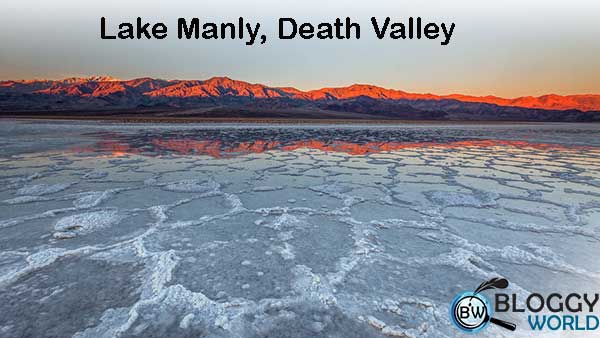
Harsh Weather of Death Valley:
A long time ago, in 1913, it got super hot in Death Valley. They measured the temperature as 134°F (56.7°C), which is the hottest it’s ever been on Earth. Some people don’t agree with that measurement, though. Its extreme heat is due to its low elevation and unique topography, which trap heat.
How extreme weather in Death Valley is?
Death Valley experiences scorching summers with average daytime temperatures over 100°F (37.8°C). Relatively mild winters with temperatures ranging from 60-70°F (15.6-21.1°C).
Rainfall:
In stark contrast, Death Valley receives minimal rainfall, with an annual average of just 2.36 inches (60 mm). Most of this precipitation occurs in the winter months, making the region exceptionally arid.
What is the best time to visit Death Valley?
The best time to visit is during the fall and early spring when the weather is milder, typically from October to April.
February is a fine time to visit! The average high temperature of Death Valley in February is 72 degrees Fahrenheit. The average low is 46 degrees Fahrenheit – a perfect range for an active adventure vacation! February is also typically the wettest month. On average, it sees .51 inches of rainfall!
A Glimpse into History:
Why is it called the Death Valley?
The ominous name “Death Valley” was given by pioneers during the California Gold Rush in the mid-1800s. Their perilous journey through this harsh terrain, coupled with the extreme heat and limited resources, led to the area’s foreboding reputation.
What is the story of Death Valley?
Death Valley’s history is filled with tales of gold rushes, Native American tribes, and the perilous journey of pioneers.
Native American History:
Before the arrival of European settlers, Death Valley was home to various Native American tribes, including the Timbisha Shoshone. These indigenous peoples adapted to the challenging desert environment, relying on the valley’s unique resources.
Mining and Boomtowns:
The late 19th century saw a mining boom in Death Valley, with precious minerals like borax and silver being extracted. Boomtowns such as Rhyolite and Skidoo briefly thrived but eventually succumbed to the unforgiving desert.
Staying and Surviving:
Travel prepared to survive:
Where to stay in Death Valley?
The Ranch at Death Valley is a U.S. National Park Service. The Ranch at Death Valley is a popular lodging option, offering comfortable accommodations and easy access to the park’s attractions. Ranch at Death Valley is located within Death Valley National Park. The Ranch at Death Valley is an oasis in the desert, with modern guest comforts, spring-fed pools, gardens, golf course; in the heart of Death Valley
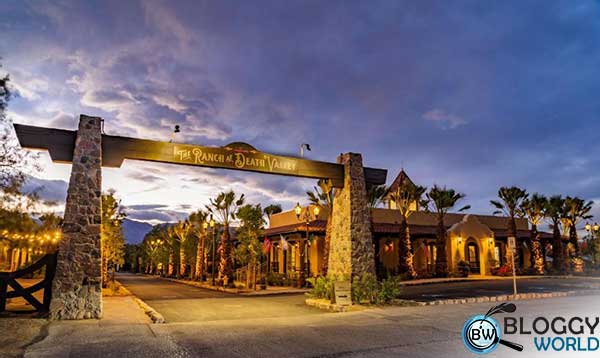
How long can you survive in Death Valley?
Surviving in the extreme temperature of Death Valley without proper preparation can be challenging. It’s crucial to stay hydrated, avoid strenuous activities during peak heat, and carry essential supplies.
Exploring Death Valley:
Death Valley National Park offers a range of activities. These activities include hiking the picturesque Mesquite Flat Sand Dunes, visiting Badwater Basin (the lowest point in North America), and exploring the historic Harmony Borax Works. Death Valley National Park offers a wide range of hiking options for visitors:
Badwater Basin: Visit the surreal salt flats of Badwater Basin, the lowest point in North America. The salt crust here forms intricate patterns, and the vast expanse is a photographer’s dream.
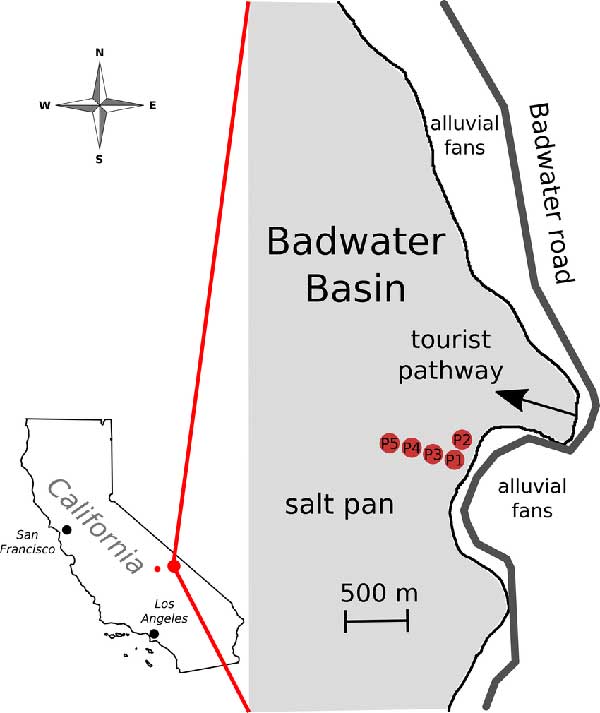
2. Zabriskie Point: Hike to Zabriskie Point for panoramic views of the colorful badlands, which light up in vibrant hues during sunrise and sunset.
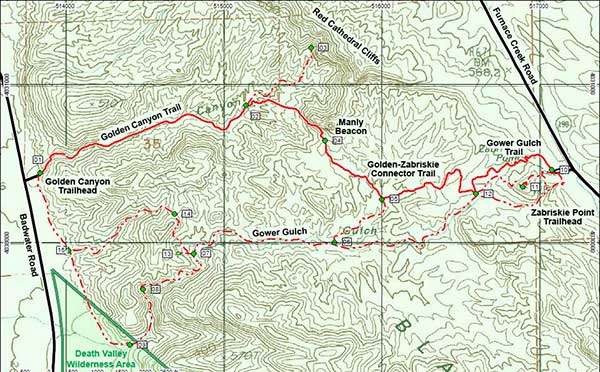
3. Mesquite Flat Sand Dunes: Explore these picturesque dunes, where the shifting sands create endless photo opportunities. The dunes are particularly enchanting in the early morning or late afternoon light.
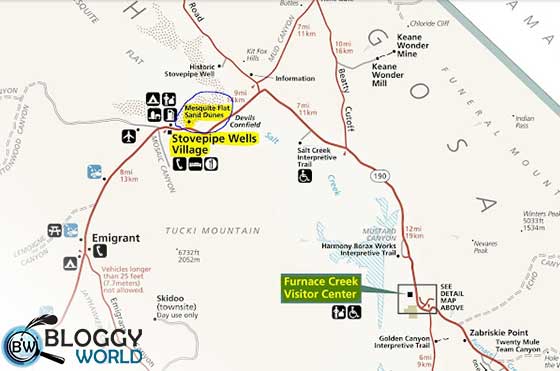
4. Artist’s Palette: Witness a natural canvas of mineral-rich rocks painted in an array of colors, making for a striking geological wonder.
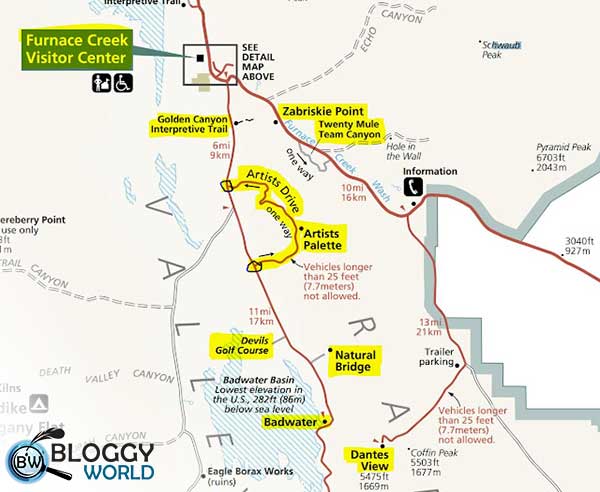
5. Golden Canyon: Hike the Golden Canyon trail to reach the awe-inspiring Red Cathedral and marvel at the deep, narrow canyons carved by erosion.
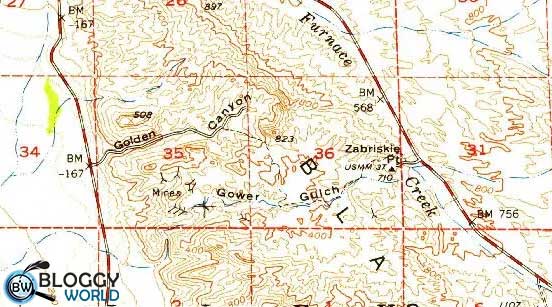
What attracts people to Death Valley National Park?
The Death Valley National Park’s unique and rugged landscapes, temperature, colorful geologic formations, and stargazing opportunities. Under its dark skies make it a magnet for adventurers and nature enthusiasts.
Safety and Preparation
Visiting Death Valley requires careful planning and preparation:
- Hydration: Consume at least one gallon (equivalent to 4 liters) of water daily to replenish fluids lost through sweating. Adjust your intake based on your level of physical activity.
- Sun Protection: Protect yourself from the intense sun with sunscreen, a wide-brimmed hat, and sunglasses.
- Vehicle Maintenance: Ensure your vehicle is in good working condition, as the remote desert roads can be unforgiving.
- Hiking: If you plan to hike, inform someone of your itinerary. Carry essential supplies, and be mindful of the weather conditions.
- Be prepared for safe travel: Stick to paved roads, especially during the summer months. If your vehicle breaks down, remain with it until assistance arrives. Always carry extra water in your vehicle for potential emergencies.
- Stay vigilant for warning signs: If you experience symptoms like dizziness, nausea, or headaches, seek shade immediately and hydrate with water or sports drinks. Dampening your clothing can help lower your body temperature. Be watchful for similar signs in others.
- The primary cause of fatalities in Death Valley: The majority of deaths occur due to single-car accidents. To reduce the risk of accidents, adhere to speed limits, use lower gears on steep downhill slopes, and wear seatbelts.
- Beware of hazardous wildlife: Avoid placing your hands or feet in areas where you cannot see them first. Concealed locations may shelter rattlesnakes, scorpions, or black widow spiders.
Allure of Death Valley:
Death Valley is not only a geographical wonder but also a testament to the resilience of life in one of the harshest environments on Earth. Whether you’re drawn by the extreme weather of Death Valley, natural beauty, or historical intrigue, Death Valley has something to offer every curious traveler.
So, when planning your visit to Death Valley, remember to stay safe, embrace the mysteries it holds, and prepare for an unforgettable adventure in one of the world’s most fascinating places.
Death Valley’s stark beauty, unique geology, and extreme climate make it a destination like no other. Whether you’re captivated by its geological wonders, intrigued by its history, or simply seeking a connection with nature’s raw power, Death Valley offers an unforgettable experience.
With this guide in hand, you’re ready to explore the depths and heights of Death Valley, where nature’s extremes meet in a breathtaking display of Earth’s wonders.


